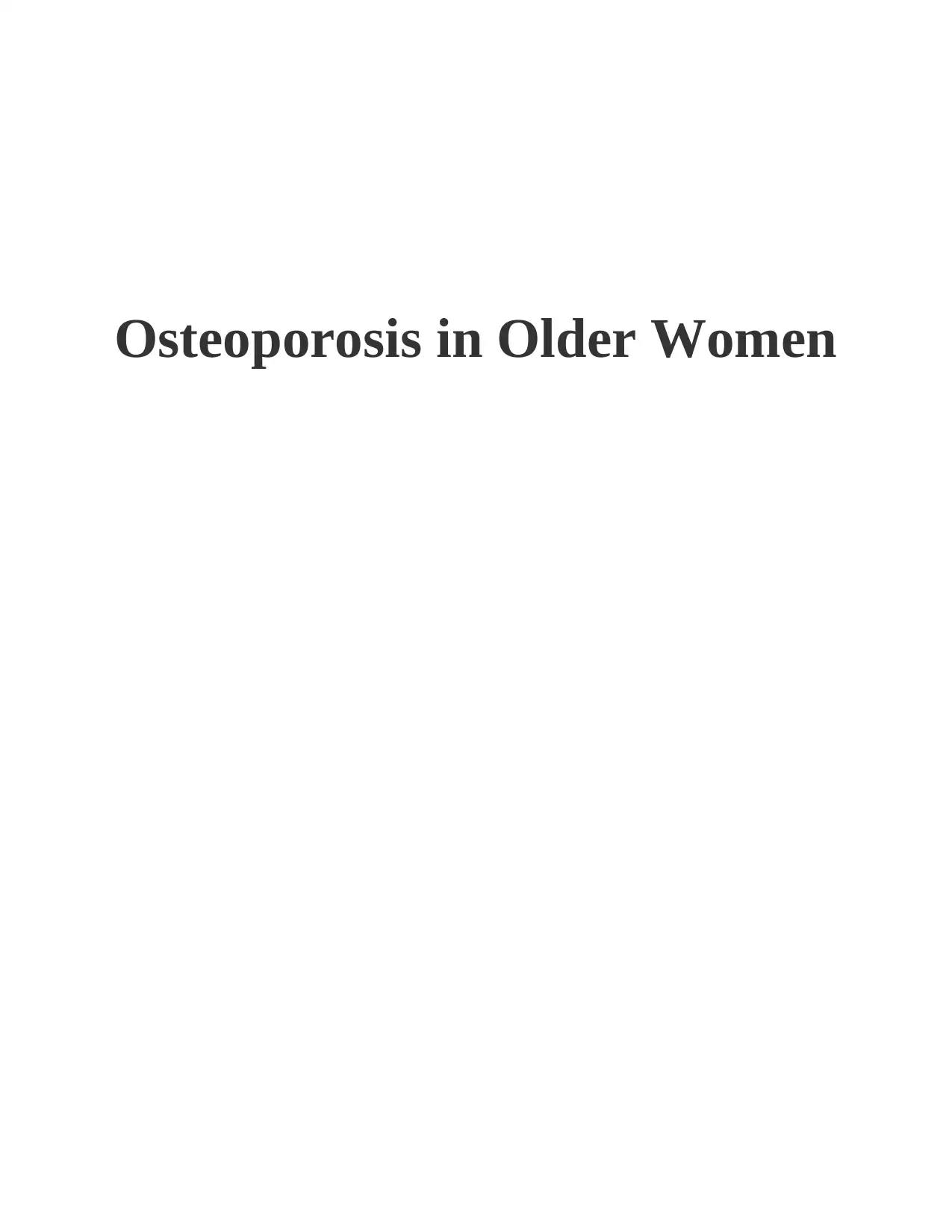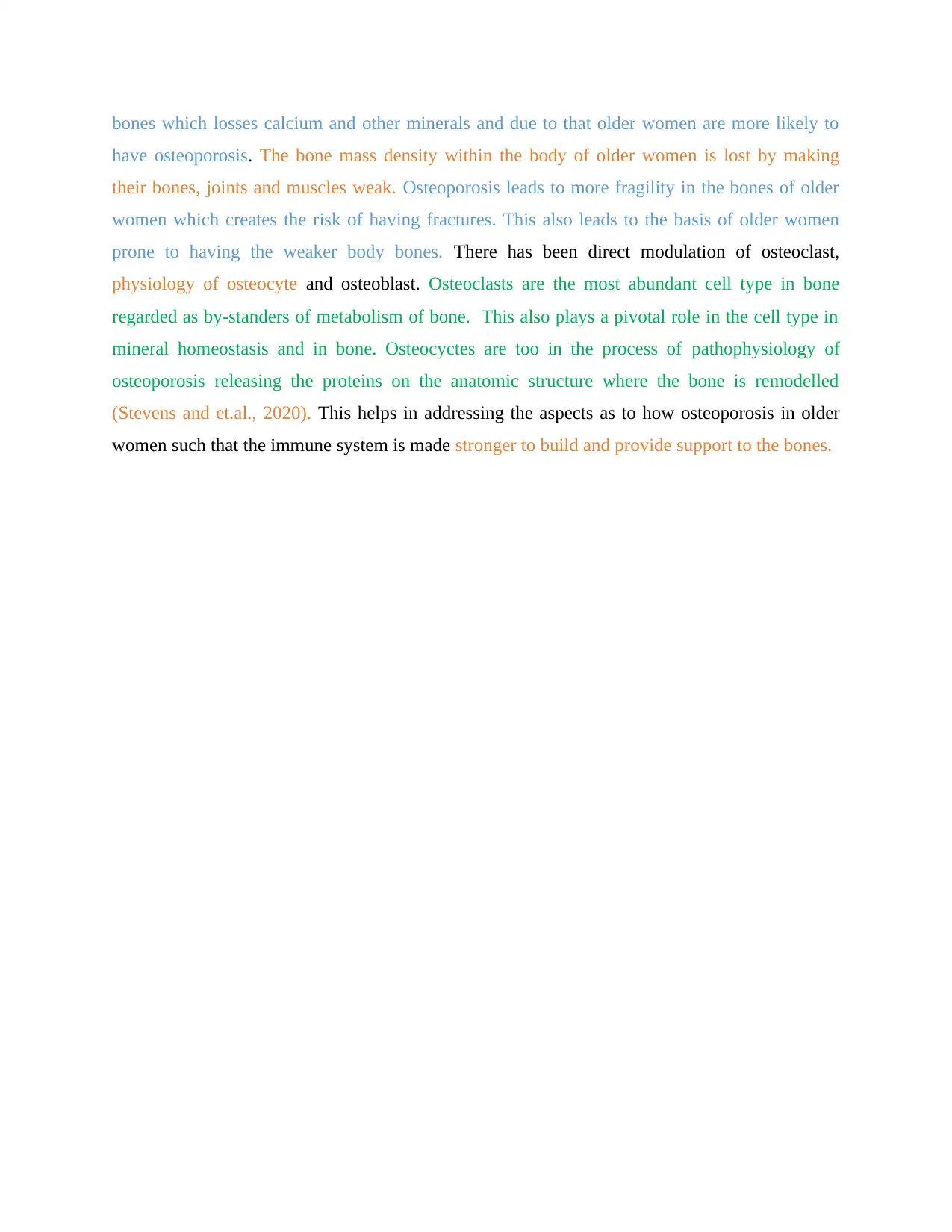An Analysis of the Pathophysiology of Osteoporosis in Older Women
VerifiedAdded on 2023/06/11
|5
|837
|127
Report
AI Summary
This report provides a comprehensive explanation of the underlying pathophysiology of osteoporosis in older women. It details the systematic skeletal disorder characterized by low bone mass and deterioration of bone tissue, leading to an increased risk of fractures. The report emphasizes the role of estrogen in maintaining bone health and how its decline post-menopause contributes to bone loss. Key mechanisms discussed include excessive bone resorption, inadequate bone formation, and insufficient peak bone mass, all influenced by hormonal factors and molecular signals. The report also addresses the roles of osteoblasts, osteoclasts, and osteocytes in bone remodeling and the impact of the immune system on bone loss. Furthermore, it highlights the significance of the RANK/OPG pathway in regulating bone homeostasis and the increased risk of fractures due to weakened bones in older women with osteoporosis. Desklib provides this assignment solution and many other resources for students.
1 out of 5












![[object Object]](/_next/static/media/star-bottom.7253800d.svg)